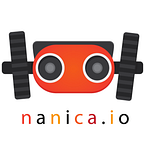Arduino Boards with Small Footprints [mid 2015]
Because there are so many variants of Arduino available, this is a selection we’ve made to narrow down our choices. This also includes main points of consideration for each board.
But you might want to see Sparkfun’s comparison first…
Now back to the article…
Official Boards
- Arduino Micro
- Arduino Fio
Sparkfun Boards
- SparkFun’s Pro Micro
- SparkFun’s Microview
Boards by other companies
- Microduino and mCookie
- RFDuino
ADDITIONAL BOARDS AFTER THIS ARTICLE
- Teensy 3.1
- Adafruit Metro Mini
- Sparkfun QDuino
- Bluno Beetle by DFRobot
OFFICIAL BOARDS
ARDUINO FIO
- ATmega 328p @ 8 MHz
- 28 mm x 65 mm
- has a footprint for an XBee (wireless comm)
- has a LiPo charging circuit
- 3.3 Volts operating voltage as opposed to 5 Volt boards featured in this list
SPARKFUN BOARDS
SPARKFUN MICROVIEW
- ATmega 328p @ 16MHz
- Built-in 64x48 OLED display
- requires a separate usb programmer
- actual size unavailable, but it’s almost as small as a finger tip!
- SPI communication unsupported as these pins are not externally exposed
- no reset button
OTHER BOARDS
MICRODUINO + mCOOKIE
- original microduino is 26 mm x 28 mm, mCookie is much smaller
- several interesting shields available
- has variants with and without on board programmer
- you’ll have to install a special modified variant of Arduino1.0x IDE for programming
- depending on the board it can use Atmega168PA, 328p, 644PA, 1284P (which signifies the memory of its flash, and EEProm in KB) that runs @ 8 Mhz — 16 MHz (depending on variant)
- relatively “NOT noob-friendly” documentation and support (compared with official/sparkfun boards)
- no official mCookie spec sheets has been released yet (available only for preorder as of writing)
- “The RFD22301 compliance approved SMT module is placed onto a DIP board to create the RFD22102 RFduino DIP form factor”
- 23 mm x 29 mm
- 16 MHz, 3V operating voltage
- needs a separate USB programmer shield, no reset button
- with onboard BLE hardware and compatible ios apps for built-in control features
- a few interesting shield are available
- relatively “NOT noob-friendly” documentation and support (compared with official/sparkfun boards)
SIZE COMPARISON IMAGE
You might be wondering why we I chose not to include Sparkfun’s Arduino Mini, Adafruit’s Trinket, Arduino boards for e-textile, Littlebit arduino’s, Intel’s Edison, Digispark, among others.
While these boards are also great, I just selected boards which I believe has the best balance of size, power, price, versatility, features and support (i.e noob-friendly-ness).
As you might have noticed most of the core chips of these boards are Atmega328p, Atmega328 and Atmega32u4 which are very similar to each other.
Littlebits and Digisparks don’t have enough pins and power. The Edison is too expensive and advanced for the projects that I have in mind. I have no plans on making e-textile projects so all boards specially made for e-textile are out. The Trinket and Mini have special specifications that i’d rather not worry about (E.G the Trinket Pro has unnecessary [IMHO] broken-out FTDI pins, and unusable #2, #7 and no serial communication, Sparkfun’s Mini has requires an FTDI basic breakout to program (that’s not a shield unlike for the Rfduino, Microview, and Microduino))
The projects we have in mind requires a handful of analog and pwm output pins (a few with hardware interrupt capabilities) for analog sensors and for driving dc, stepper and servo motors. They also need I2C, SPI, and Serial communication ports to communicate with other boards.
UPDATE: MORE BOARDS!
- TEENSY 3.1
- ADAFRUIT METRO MINI
- SPARKFUN QDUINO
- Bluno Beetle + BLE Micro by DFRobot
TEENSY 3.1
But I guess.. TEENSY’S (3.1) really awesome. ☺I just didn’t know how powerful it was when I wrote this article. ☹
32 bit ARM Cortex-M4, 72 MHz [35mm x 18 mm]
ADAFRUIT METRO MINI
18 mm x 44 mm, 16 MHz @ 5V, Atmega328
SPARKFUN QDUINO
(still in the works, not yet available)
8 MHz at 3.3V, ATmega32U4, 25.4 mmx 38.1 mm
with TPS78233 3.3V 150mA Regulator, MCP73832 LiPo Battery Charger, MAX17048 LiPo Battery Fuel Gauge.
